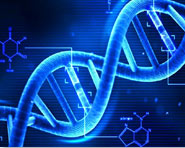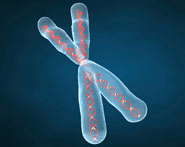


 النبات
النبات
 الحيوان
الحيوان
 الأحياء المجهرية
الأحياء المجهرية
 علم الأمراض
علم الأمراض
 التقانة الإحيائية
التقانة الإحيائية
 التقنية الحيوية المكروبية
التقنية الحيوية المكروبية
 التقنية الحياتية النانوية
التقنية الحياتية النانوية
 علم الأجنة
علم الأجنة
 الأحياء الجزيئي
الأحياء الجزيئي
 علم وظائف الأعضاء
علم وظائف الأعضاء
 الغدد
الغدد
 المضادات الحيوية
المضادات الحيوية|
Read More
Date: 11-9-2021
Date: 30-10-2021
Date: 8-12-2021
|
Macrominerals : Calcium and phosphorus
The macrominerals include calcium (Ca2+), phosphorus ([P] as inorganic phosphate [P i, or PO43−]), magnesium (Mg2+), sodium (Na+), chloride (Cl−), and potassium (K+). [Note: The free ionic forms are electrolytes.]
Calcium and phosphorus
These macrominerals are considered together because they are components of hydroxylapatite (Ca5[PO4]3OH), which makes up bones and teeth.
1. Calcium: Ca2+ is the most abundant mineral in the body, with ~98% being found in bones. The remainder is involved in a number of processes such as signaling, muscle contraction, and blood clotting. Ca2+ binds to a variety of proteins including calmodulin , phospholipase A2 , and protein kinase C and alters their activity. [Note: Calbindin is a vitamin D–induced intracellular Ca2+-binding protein involved in Ca2+ absorption in the intestine .] Dairy products, many green vegetables (for example, broccoli, but not spinach), and fortified orange juice are good dietary sources.
Although dietary deficiency syndromes are unknown, average Ca2+ intake in the United States is insufficient for optimal bone health. Toxicity is seen only with supplements (tolerable upper limit [UL] = 2,500 mg/day for adults). Hypercalcemia (elevated serum Ca2+) can result from overproduction of parathyroid hormone (PTH). This may cause constipation and kidney stones. Hypocalcemia (low serum Ca2+) can result from a deficiency of PTH or vitamin D. It can lead to bone demineralization (resorption).
Bone mass increases from infancy through the early reproductive years and then shows an age-related loss in both men and women that increases the risk for fracture. This loss is greatest in postmenopausal Caucasian women. Some studies have shown that supplementation with Ca2+ and vitamin D decreases this risk.
2. Phosphorus: Free phosphate (Pi) is the most abundant intracellular anion. However, 85% of the body’s phosphorus is in the form of inorganic hydroxylapatite, with most of the remainder in intracellular organic compounds such as phospholipids, nucleic acids, ATP, and creatine phosphate. Phosphate is supplied as ATP for kinases and as Pi for phosphorylases (for example, glycogen phosphorylase).
[Note: Its addition (by kinases) or removal (by phosphatases) is an important means of covalent regulation of enzymes .] Phosphorus is widely distributed in food (milk is a good source), and dietary deficiency is rare. Hypophosphatemia can be caused by refeeding carbohydrates to malnourished patients (refeeding syndrome, ), overuse of aluminum-containing antacids (aluminum chelates Pi), and increased urinary loss in response to increased production of PTH . Muscle weakness is a common symptom. Hyperphosphatemia is caused primarily by decreased PTH levels. The excess Pi can combine with Ca2+ and form crystals that deposit in soft tissue (metastatic calcification). [Note: The Ca2+/Pi ratio is important for bone formation (the ratio is ~2/1 in bone), and some experts are concerned that replacement of Ca2+-rich milk by Ca2+-poor, Pi-rich soft drinks can affect bone health.]
3. Hormonal regulation: Serum levels of Ca2+ and Pi are primarily controlled by calcitriol (1,25-dihydroxycholecalciferol, the active form of vitamin D) and PTH, both of which respond to a decrease in serum Ca2+.
Calcitriol, produced by the kidneys, increases serum Ca2+ and Pi by increasing bone resorption and intestinal absorption and renal reabsorption of Ca2+ and Pi (Fig. 1). PTH (from the parathyroid glands) increases serum Ca2+ by increasing bone resorption, increasing renal reabsorption of Ca2+, and activating the renal 1-hydroxylase that produces calcitriol from calcidiol (Fig. 2). In contrast to
calcitriol, PTH decreases Pi reabsorption in the kidneys, lowering serum Pi. [Note: High serum Pi increases PTH and decreases calcitriol.] A third hormone, calcitonin (from the C cells of the thyroid gland), responds to elevated serum Ca2+ levels by promoting bone mineralization and increasing renal excretion of Ca2+ (and Pi).
Figure 2: Effect of parathyroid hormone on serum calcium (Ca2+). PO43– =phosphate.
Figure 1: Effect of calcitriol on serum calcium (Ca2+).



|
|
|
|
كل ما تود معرفته عن أهم فيتامين لسلامة الدماغ والأعصاب
|
|
|
|
|
|
|
ماذا سيحصل للأرض إذا تغير شكل نواتها؟
|
|
|
|
|
|
|
جامعة الكفيل تناقش تحضيراتها لإطلاق مؤتمرها العلمي الدولي السادس
|
|
|